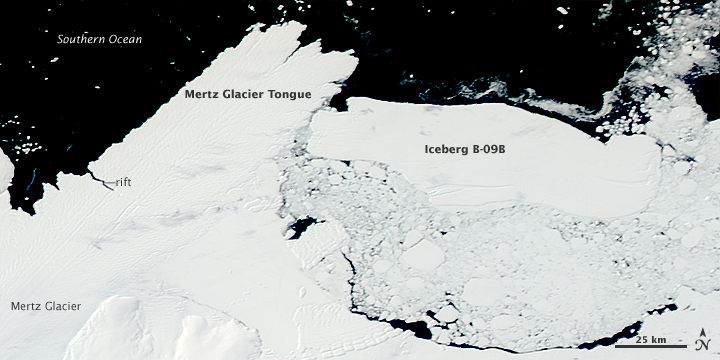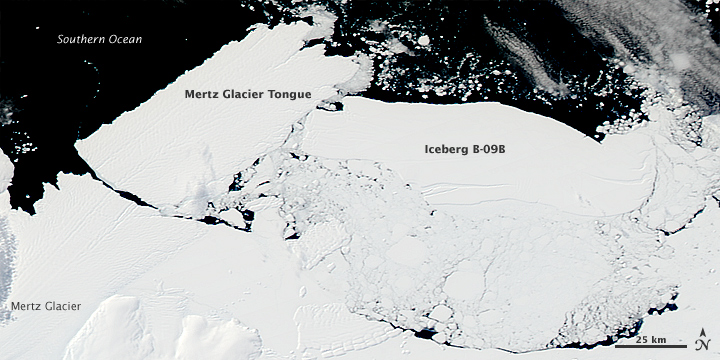Collision courseMassive iceberg spawns second giant berg after banging away at glacier tonguePosted March 5, 2010
An iceberg the size of Rhode Island collided with the Mertz Glacier Tongue The glacier tongue had previously contributed to keeping a section of the ocean free of ice, a condition known as a polynya. With part of the glacier gone, the area could fill with sea ice, which would disrupt the sinking ability of the dense and cold water, according to a story in DiscoveryNews For more information about polynyas, see previous Antarctic Sun articles: Pulse on polynyas and Record flight. |



For USAP Participants |
For The Public |
For Researchers and EducatorsContact UsU.S. National Science FoundationOffice of Polar Programs Geosciences Directorate 2415 Eisenhower Avenue, Suite W7100 Alexandria, VA 22314 Sign up for the NSF Office of Polar Programs newsletter and events. Feedback Form |



